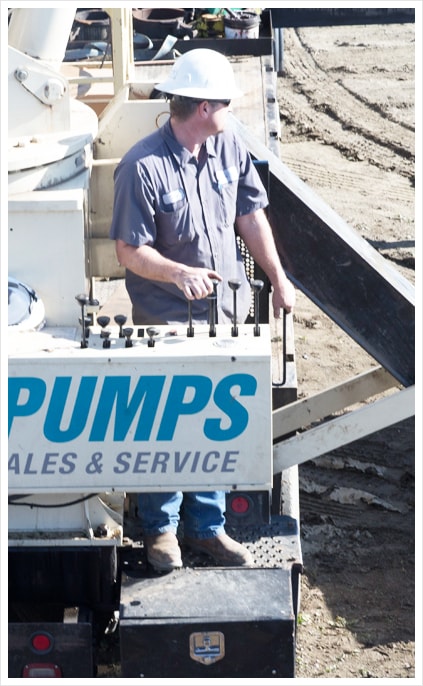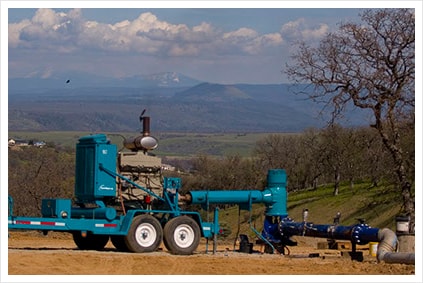WELL DEVELOPMENT
Performing at highest efficiencies
Well development removes residual drilling fluid and other debris from the well just after construction is completed, so that it can produce clean water, in sufficient quantities, to meet customer needs. Both well construction and well development greatly determine a well’s production levels over the course of its operating life. Our water well pump professionals, working in conjunction with our drilling specialists, devise procedures for developing newly completed wells so they can produce to their full capability.
Like well design, well development is not a “cookie cutter” process. We incorporate information from Exploratory drilling, Geophysical logs and Well designs to devise a unique development plan for a given well. Plans might focus on development of an isolated zone or encompass a broader strategy to develop multiple zones. In some plans we apply chemicals to break down drilling fluids so they can be more easily removed from water-bearing formations and surrounding gravel pack.
We use test pump results, and other data, to design a suitable pumping system to be installed permanently. For the system to be cost effective, the equipment installed should be selected for optimal efficiency for the given conditions in the well. During development, we verify water levels by taking regular lineal and flow measurements for determining specific capacity (output flow rate per unit draw down) and employ the Rossen Sand Test to measure particle content. We terminate the development process when concentrations of drilling fluid and formation solids fall below measurable levels and the specific capacity of the well remains constant, without increasing, after some time has elapsed.
Deep production zones are under greater hydrostatic pressure than shallow ones because they bear the weight of more water above them. To equalize pressures at shallow and deep perforated regions, we incorporate a deep suction system during test pumping so that both shallow and deep formations can be cleared of debris and residual fluids. Without deep suction, the additional pressure at deep regions—regions far removed from the pump intake—prevents significant influx of formation water to clean out the surrounding invaded zone. That is, without deep suction, shallow zones are developed while deep ones remain unaffected, thus preventing their contribution to the well’s overall production.


Eaton Drilling Co LLC in Woodland, Contractor license (133783), A General Contractor, C-57 Well Drilling and C-61 Specialty services in California, also other trades Nevada and Oregon. Our equipment conforms to current air quality standards.
Address: 20 West Kentucky Ave, Woodland Ca 95695/ PH: 530.662.6795